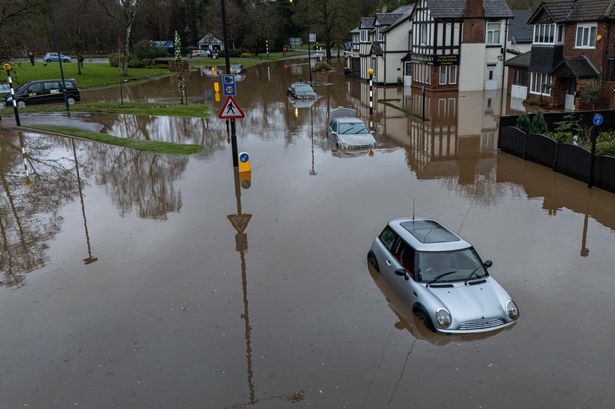The Met Office has issued a yellow ice warning encompassing a vast swathe of the UK, heralding a period of treacherous travel conditions and potential disruption. This warning follows in the wake of a major incident declared in Greater Manchester due to significant flooding, underscoring the volatile and impactful nature of the current weather patterns. The ice warning itself signifies the potential for ice to form on untreated surfaces, particularly roads and pavements, posing a significant hazard to pedestrians and motorists alike. This risk is exacerbated by the preceding rainfall and flooding, as residual water freezes, creating invisible yet perilous icy patches. Furthermore, the forecast predicts a widespread snowfall across Britain this weekend, adding another layer of complexity and concern to the already challenging conditions. The combination of ice and snow will create an especially hazardous environment, necessitating heightened caution and preparedness.
The major incident declared in Greater Manchester illustrates the severe consequences that can arise from extreme weather events. Flooding, often triggered by intense rainfall or overflowing rivers, can cause widespread damage to property, infrastructure, and even lead to loss of life. The declaration of a major incident signifies the seriousness of the situation and triggers a coordinated response from emergency services and local authorities. This response typically involves evacuations of affected areas, provision of temporary shelter, and efforts to mitigate further damage. The flooding in Greater Manchester highlights the vulnerability of urban areas to extreme weather and emphasizes the importance of effective flood defences and emergency response plans. The current weather conditions raise broader questions about the increasing frequency and intensity of such events, potentially linked to climate change, and the urgent need for proactive measures to mitigate their impact.
The yellow ice warning issued by the Met Office serves as a critical alert to the public, urging them to take necessary precautions. The warning highlights the potential for treacherous travel conditions, advising individuals to avoid unnecessary journeys where possible. For those who must travel, it is crucial to exercise extreme caution, reduce speed, and maintain a safe distance from other vehicles. Pedestrians are also at heightened risk, as icy pavements can be difficult to navigate, leading to slips and falls. Wearing appropriate footwear with good grip is essential, and extra care should be taken when walking on untreated surfaces. Staying informed about the latest weather updates and heeding official advice are crucial steps in mitigating the risks associated with the ice warning.
The anticipated snowfall this weekend will further compound the challenges posed by the icy conditions. Snow can significantly reduce visibility, making driving even more hazardous. It can also lead to road closures and disruptions to public transport, impacting travel plans and potentially isolating communities. The combination of ice and snow creates a particularly precarious environment, requiring careful planning and preparation. Ensuring vehicles are winter-ready, with appropriate tyres and emergency supplies, is crucial. Staying indoors where possible and avoiding unnecessary travel are recommended precautions during periods of heavy snowfall. Monitoring weather forecasts and travel advisories will help individuals make informed decisions and stay safe.
The convergence of flooding, ice, and snow underscores the interconnected nature of weather systems and the potential for cascading impacts. Flooding can saturate the ground, making it more susceptible to freezing and increasing the likelihood of ice formation. Subsequent snowfall then adds another layer of complexity, creating a challenging and potentially dangerous environment. These interconnected weather events highlight the importance of a holistic approach to risk management and emergency preparedness. Effective communication, coordination between agencies, and community engagement are crucial aspects of a resilient response to such challenges. Furthermore, these events underscore the need for long-term strategies to address the underlying causes of extreme weather, including climate change mitigation and adaptation measures.
The current weather situation across the UK serves as a stark reminder of the power and unpredictability of nature. The combination of flooding, ice warnings, and anticipated snowfall presents a significant challenge to communities and infrastructure. It reinforces the importance of individual preparedness, community resilience, and effective emergency response mechanisms. These events also highlight the broader context of climate change and the growing need for proactive measures to mitigate the risks associated with extreme weather events. Staying informed, heeding official advice, and taking appropriate precautions are crucial steps in navigating these challenging conditions and ensuring the safety and well-being of individuals and communities.














